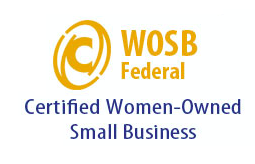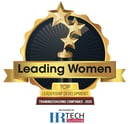
There has been much written about the business case for a more inclusive workplace as organizations embrace diversity, equity, inclusion and belonging. In our latest blog series, 4 Steps to Making a Real & Lasting DE&I Impact, we addressed why the traditional business case has not delivered the outcomes promised, the importance of level-setting with a cultural assessment, and then building a road map to reach your inclusion goals.
Next up, let’s talk about building inclusive leadership across your business (#3 of the four steps).
There is no single training session that is going to solve what I believe is the omnipresent challenge––or opportunity––of our time.
I have been in the business of change long enough to know that any kind of change is hard, and something that can’t be forced onto people. Forcing often results in resistance and resentment, and failed efforts. Changing to a culture of inclusivity is quite possibly one of the hardest kinds of change to embrace. And to say it’s complex and highly charged is an understatement. There is no silver bullet or magic wand. It takes time and a multi-pronged ever-dynamic approach to translate good intentions into consistent and inclusive practices.
As global advisors to organizations for over 15 years, we know our approach and proven solutions change mindsets, which will then lead to behavior change, and create the kind of culture and impacts that organizations aspire to.
Today I offer up a checklist for action which is informed by our own research hub, the Center for Diversity & Inclusion, and further validated by our global experts and clients (more on that later).
LEADING NOW’S CHECKLIST FOR ACTION TO INCLUSION:
- Has to start at the top with senior leadership –– who must authentically embrace and model inclusive behaviors so the rest of the organization will follow. Key word: authentically. This is territory where lip-service, ‘dialing it in’ or half-hearted attempts will backfire and hinder rather than help. We target leaders initially because of the influence they have to set the tone and drive this culture shift by example.
- DE&I must be integrated into the whole business –– Inclusive behaviors have to be embedded into company values and/or positioned as absolutely core to future success. They cannot be relegated to a side project or delegated to a person or small team where it becomes easy for it to be deprioritized or even a flavor of the month initiative. Inclusivity is germane to the entire talent and business strategy and as such must sit firmly at the center of the business and value chain encompassing employees, suppliers, customers, and all stakeholders.
- Our approach is one of ‘conscious inclusion’. I admit to being a past fan of unconscious bias programs. The brain science is intriguing, and it helps answer the question of why we act and react as we do. However, most (UB programs) stop short of providing help on what we can do to change our behaviors––and that’s where conscious inclusion has the edge every single time. It’s inherently about making conscious decisions that lead to better and more inclusive outcomes, and it demands action and accountability –– from everyone.
- It’s important to start with mindsets which drive our thinking, and unconscious, as well as, conscious behavior. We have to start with exploring our current individual mindsets that are informed by a lifetime of experiences, and understand what they are, and how they are shaping our world view, actions and consequences. In his autobiography, Nelson Mandela shared how over the years, even as an ardent campaigner and activist for racial equality he had internalized negative stereotypes of black incompetence. So much so, that when a black African was the pilot for his first flight after release from 28 years in prison, he felt frightened and nervous. Key to getting comfortable and feeling safe was to acknowledge the limiting mindset that was governing his thinking and visceral response.
- Leading NOW solutions are customized to the specific dynamics at play within our clients’ organizations and are facilitated in a highly experiential and engaging way to deliver fresh insights and alter mindsets. Each session finishes with reflection and action-planning so that everyone leaves with a blueprint for what they will do differently as a result of their new insights and knowledge.
Change is a very personal thing, and scaling to the organizational level––to embrace a whole cohort of individuals simultaneously and collectively––is a big deal.
By using this ‘leader-led top-down approach’, we helped Finnish telecommunications giant, Nokia, make huge strides towards developing an inclusive culture last year despite the travails of the Coronavirus pandemic. The missive came from the CEO who declared in 2019 that Nokia would become an inclusive organization for all. With our partnership and ‘Navigating Bias’ training, Nokia successfully trained their line managers across the globe to focus on recruiting, engaging, and developing diverse teams. As commented on in their annual report, the inclusion training “overachieved its targeted participation rate, reaching over 85% of all line managers; this training aims to advance bias-free leadership by educating managers to recognize and counteract their mindset and potential bias.”
It's time to get started.
Sometimes getting started is the trickiest piece of the equation as you try to land on the perfect road map for action. We can help. As we think about the climate in which we are all living and operating, there is no question that businesses must respond and adapt to change. The 5-point checklist above will help steer you in the right direction. My advice is to forget striving for the perfect plan, and instead, opt for sensible, practical, and proven steps that will deliver progress.
For more information, or to discuss your organization’s specific DE&I-related needs, let’s talk about partnering together to move you towards your goal of creating a more inclusive culture. Together, we can help deliver sustained and extraordinary outcomes to your organization for years to come. #FutureForward
The next part of our prescription for DE&I success is to support your under-represented talent with additional leadership preparation and to create equal access to opportunities––to level what is often (unintentionally) a very biased playing field.
Read ON!
Building Inclusive Cultures to Drive Business Outcomes:
- 4 Steps to Making a Real & Lasting DE&I Impact
- Building a Road Map to an Inclusive Culture
- Building Inclusive Leadership Across Your Business
- Preparing Diverse Talent for Leadership








